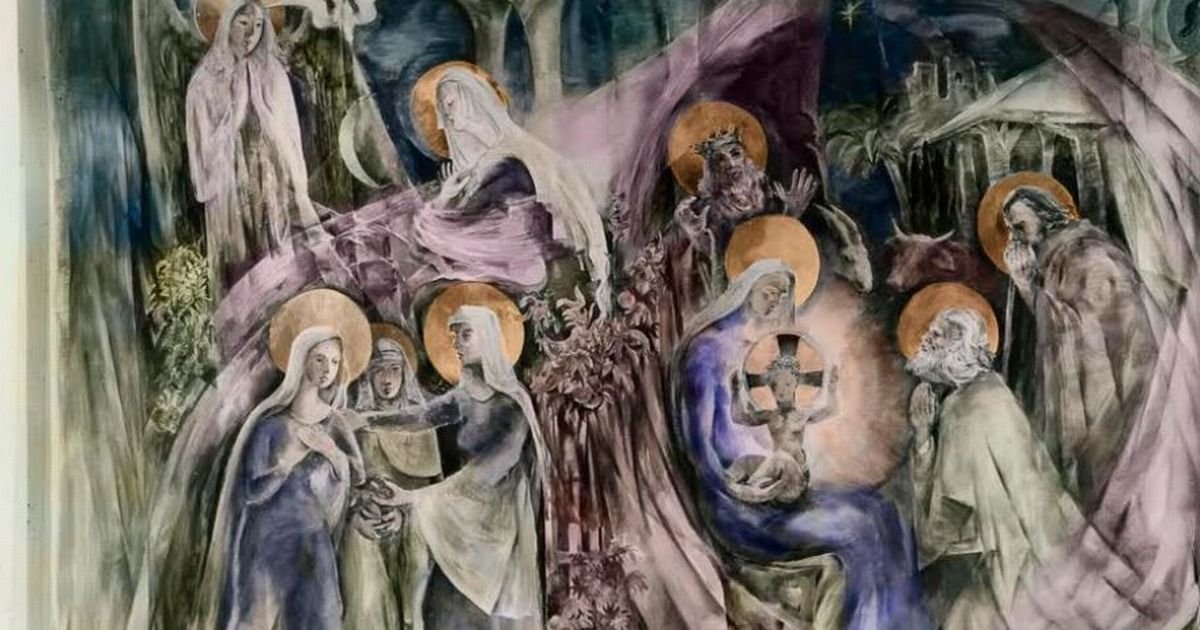
An internationally recognized art masterpiece in Salford, created by Hungarian artist George Mayer-Marton, faces destruction as part of a redevelopment plan, sparking diplomatic intervention and cultural outcry. The fresco, The Five Joyful Mysteries of the Virgin’s Rosary, adorned an entire wall of the entrance foyer at St. Ambrose Barlow RC School in Swinton since 1954 but has been hidden under paint and plaster since the 1990s.
Calls for Preservation of Artistic and Historical Value
Despite the school being vacant for over 14 years, the fresco gained renewed attention from cultural advocates, including Mayor-Marton’s great-nephew, Nick Braithwaite, conservationists, and international institutions. The Museum of Fine Arts in Budapest has described the work as deserving “preservation, not destruction,” calling it a significant cultural asset. Mayer-Marton was an acclaimed Jewish-Hungarian artist whose works were recognized across Europe, particularly in the 1920s and 1930s.
Salford City Council plans to demolish the building to make way for affordable housing. However, the Hungarian Consulate General in Manchester intervened, filing a request for an expert examination to explore possibilities of salvaging the fresco.
Stalled Demolition and Advocacy Efforts
Demolition was originally scheduled for July, but mounting pressure from advocates, conservation agencies, and Hungarian diplomats has placed the bulldozers on hold. Advocacy efforts also highlight Mayer-Marton’s tumultuous history. Persecuted by Nazis during World War II, Mayer-Marton fled to England in 1938 after losing three family members in the Holocaust. Almost all of his original artworks were destroyed in the Blitz bombings in London.
The fresco represents one of only four surviving works by Mayer-Marton and is his sole complete fresco, making it a rare artifact of post-World War II cultural history. His artwork, known for blending elements of Cubism and Futurism, transitioned into fresco and mosaic art during the 1950s as he worked in public Catholic spaces across the United Kingdom.
International Importance and Heritage Responsibility
The Manchester Evening News has reported that Salford City Council is in communication with the Hungarian Consulate to allow access for expert investigations. In a letter to the council, Zsolt Petrányi, Deputy Scientific Director at Budapest’s Museum of Fine Arts, emphasized the significance of the artwork’s preservation in its original location.
Multiple cultural authorities, backed by Nick Braithwaite, have requested an urgent uncovering of at least a small portion of the mural for detailed evaluation. Highlighting its international artistic significance, Braithwaite stated, “This is a critical point in the unfortunate history of this artwork, at which the council has a historic responsibility.” Efforts are now underway to reconcile the council’s redevelopment plans with the urgent need for preservation.
The City of Liverpool and Lancashire boast other prominent works by Mayer-Marton, including the Crucifixion, a mural inside Oldham’s Grade II listed Church of the Holy Rosary, and The Pentecost mosaic installed in Liverpool Metropolitan Cathedral. Both works have been saved due to campaigns from cultural activists.
A Glimpse at a Forgotten Masterpiece
The head of St. Ambrose Barlow Catholic High School, Ben Davis, rediscovered the fresco while researching the school’s 70th anniversary. His investigation revealed a photograph showing its intricate details, prompting him to advocate for its cultural significance. “It should never have been covered up,” Davis remarked. Experts agree that uncovering and preserving the mural could serve as a major cultural achievement for Salford and provide insights into the artist’s enduring legacy.






